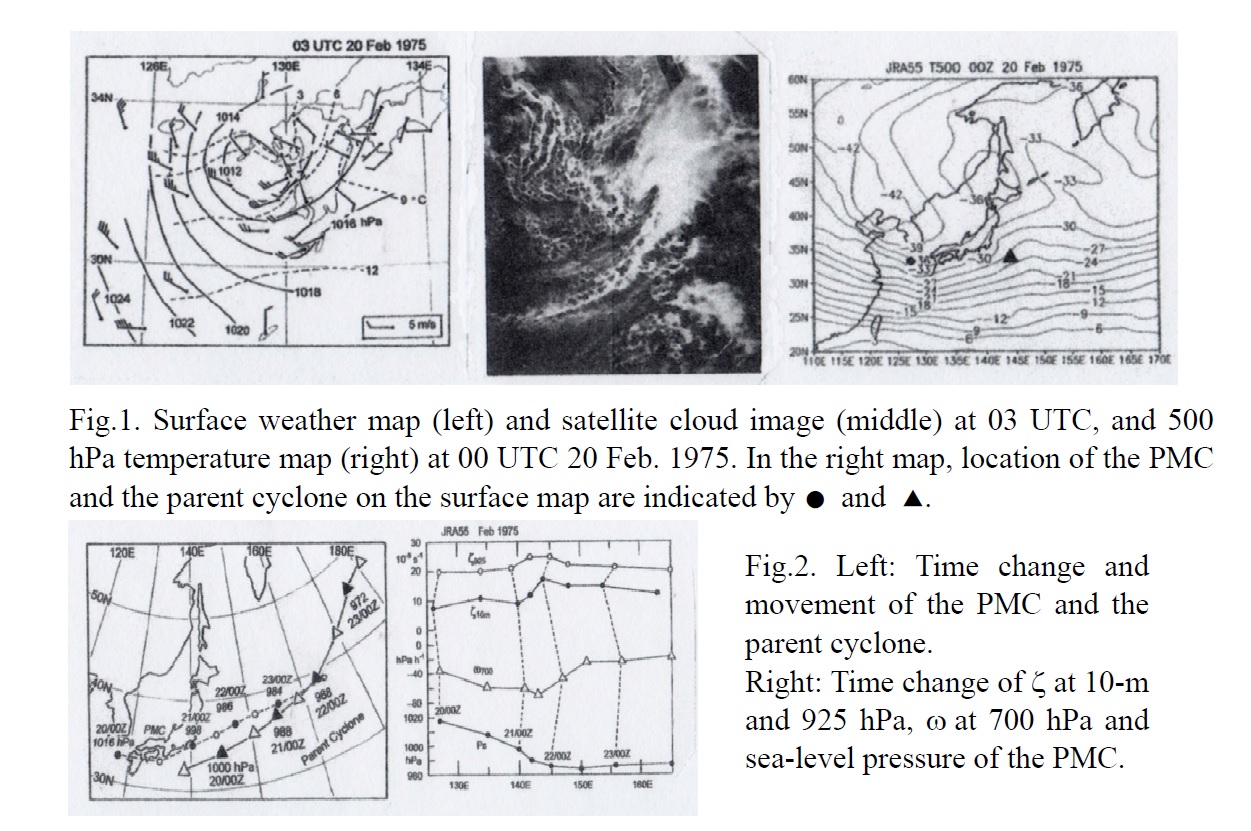Graphical Abstract
Ninomiya, K., 2017: A polar mesoscale cyclone formed over the East China Sea and developed into a secondary cyclone over the Northwestern Pacific: An observational case study on 19-22
February 1975. J. Meteor. Soc. Japan, 95, 127-145.
https://doi.org/10.2151/jmsj.2017-007
Graphical Abstract with highlights
Highlights:
- Genesis of a polar mesoscale cyclone (PMC) over the East China Sea is studied using dense observation data, satellite cloud images and JRA-55 reanalysis data.
- PMCs frequently developed over the Japan Sea. Genesis of PMCs over the East China Sea is rare, but could occur under the certain synoptic-scale conditions.
- The PMC with comma-cloud formed within cyclonic polar-air streams induced by its synoptic-scale parent cyclone which developed near Japan. Within 3-hour after generation of the PMC, its central pressure deepened from 1016 hPa (at 00 UTC) to 1012 hPa (at 03 UTC). Strong surface winds occurred in the trail of the comma-cloud (Fig.1, left and middle).
- The large-scale condition for the generation stage was characterized by the southward intruding of the cold core in the upper cold trough beyond 34°N to the eastern East China Sea (Fig. 1, right), where the moist-neutral layer formed over the warm Tsushima Current.
- The PMC, after passing over Kyushu, developed as it moved eastward along the Pacific coast of Japan. It developed further in the low-level baroclinic zone over the Northwestern Pacific, into the secondary cyclone comparable to the parent cyclone (Fig.2). The large-scale conditions for the development were characterized by the upper cold trough and the low-level baroclinic zone formed over the zone of maximum sea-surface temperature gradient along north of the Kuroshio extension.







